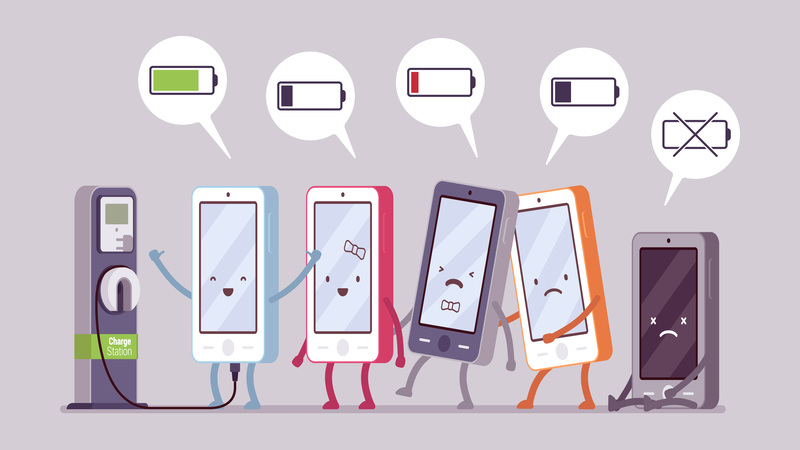There's no denying that phones are becoming more powerful every year, with applications and other functions placing increasingly tough demands on your mobile device's battery. Most of us will consider battery life to be one of the most crucial factors in selecting a new phone.
However, eventually your smartphone's battery will worsen with age, holding less charge. After one or two years, you'll likely start to notice this issue. Even further down the line, between two to three years, you might be running out of juice by lunchtime.
There’s nothing you can do to stop the gradual decline of a battery’s capabilities, but there are things you can do to prolong their life. Below, we’ll look at the battery charging habits you should adopt to ensure that your device’s battery enjoys the longest possible lifespan.
#1 – Avoid leaving your phone on charge overnight
We're probably all guilty of plugging our phones into the charger overnight, as it's the most convenient period of smartphone downtime in our daily lives. That said, the average person sleeps for around 8 hours, but your phone will likely have hit its maximum battery capacity within less than half that time.
Once your phone hits 100%, trickle charging – that is, continually topping up the phone's battery at a rate equal to its discharge – can cause minor damage over time to your battery. This can result in phone software malfunctions and reduced stability overall, as well as unnecessary heat generation. This effect is worsened even more so if the phone is left in an idle charging state as we've discussed above. For those of you who charge your phone beneath your pillow or on a hot windowsill, it might be time to change your charging habits.
#2 – Don’t let your phone overheat
Another crucial factor in ensuring that your smartphone battery doesn't suffer an early death is to avoid having your smartphone reach excessive temperatures. Such conditions place additional stress on the battery, resulting in the unit's capacity reducing far quicker than it otherwise would.
Most battery manufacturers for mobile devices will specify a temperature of around 27 degrees Celsius for optimum usage. At or around this temperature, capacity should be at around 80% of its original peak after a year of use. However, when used at around 40 degrees Celsius, this drops to approximately 65 percent.
#3 – Partial charges won’t hurt your battery!
Back in the days before lithium ion batteries were invented, your typical lead-acid rechargeable battery could suffer from something called memory effect. If you only ever partially recharged your battery, rather than letting it deplete completely and fully recharging it, then you’d be faced with this problem. Your battery would ‘remember’ the lesser capacity that it was using and subsequently reduce the unit’s overall capacity.
However, this problem doesn't affect the more modern lithium ion units, so you don't need to worry about plugging your phone in before the battery has run empty. In fact, partial charges can be healthy for your device's battery. Between approximately the 30 to 80% capacity range, a lithium ion cell operates at a lower voltage, which is beneficial for the battery and can increase its lifespan.
In a nutshell, you’re better off conducting small and regular charges as opposed to full charges from empty to max capacity. Though this won’t be possible for everyone, it can result in better overall battery lifespan.
Time for a new battery?
Fortunately, even if your device is now running an ancient power cell, you can easily replace the lithium ion battery within your device. This should be done by a professional, as you could risk damaging your phone’s internal components or causing functionality to stop working.
WiseGuys offer replacement smartphone batteries in Bournemouth and Christchurch. We can fit a new power cell to your phone whilst you wait. Simply give us a call on 0808 123 2820, or pop into one of our stores on Terrace Road in Bournemouth, or Somerford Road in Christchurch.



Recent Comments